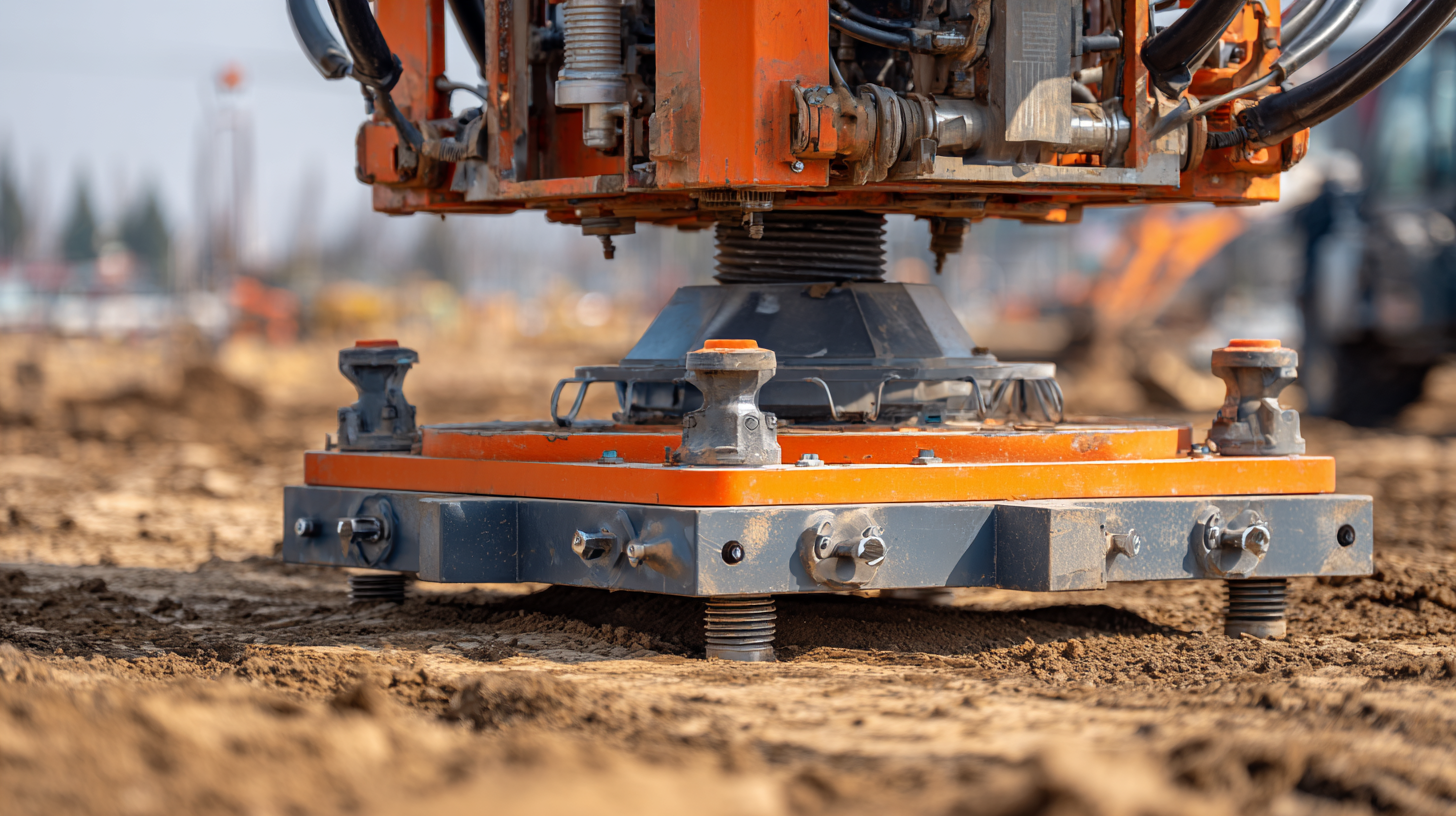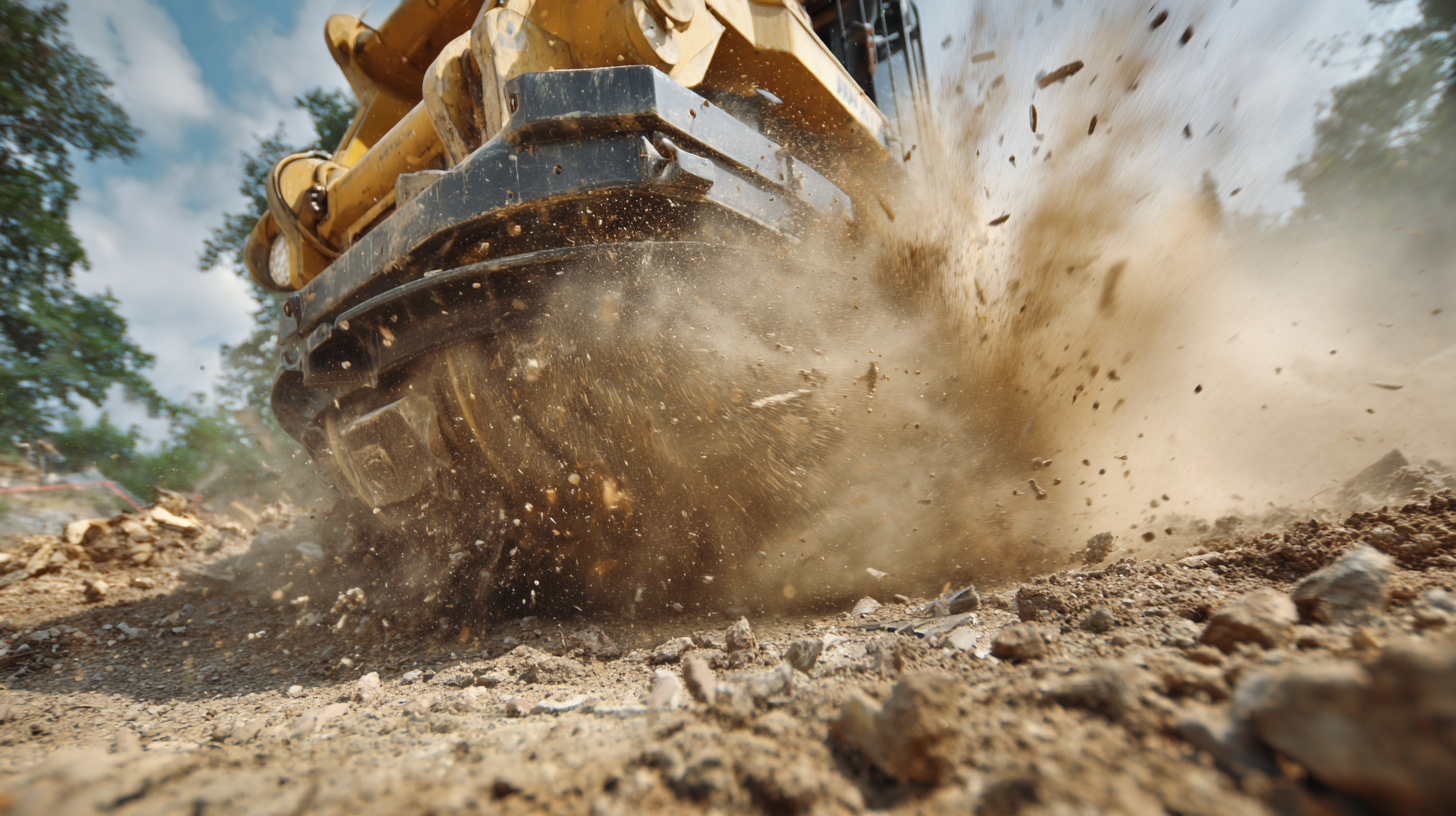 +86 13794985240
+86 13794985240
Leave Your Message
-
 CONTACT NUMBER
CONTACT NUMBER -
 CONTACT NUMBER
CONTACT NUMBER -
 CONTACT NUMBER
CONTACT NUMBER



In the competitive landscape of construction equipment, the Vibrating Compactor Rammer stands out as an essential tool for achieving optimal soil compaction, crucial for ensuring stability and longevity in various projects. According to a recent market analysis by Research and Markets, the global market for compaction equipment is projected to witness significant growth, escalating to USD 8.5 billion by 2026, driven by increasing infrastructure developments and urbanization efforts. Chinese manufacturers, renowned for their engineering excellence and innovative designs, are leading this surge, with exports exceeding USD 1 billion in recent years, as reported by the Ministry of Commerce of the People's Republic of China. This blog serves as an ultimate guide to comparing the leading Vibrating Compactor Rammers on the market, highlighting the exceptional representatives of Chinese manufacturing and their unrivaled export capabilities.

When choosing the right vibrating compactor rammer for your project, it's essential to focus on key features that enhance performance and longevity. One major consideration is the machine's engine efficiency and durability, as these are common points of breakdown. The latest industry reports indicate that as the soil compaction machines market is projected to reach $11.8 billion by 2035, driven by factors such as smart city initiatives and road construction, the demand for reliable, high-performance equipment has never been higher.

Another significant feature to look for in vibrating compactor rammers is innovation in compaction technology. As rammers, plates, and rollers evolve, manufacturers are putting a greater emphasis on reducing vibrations to protect operators from hand-arm vibration syndrome (HAVS). Low-vibration models have emerged as essential for improving safety and comfort during prolonged use. Additionally, advancements in intelligent compaction techniques are shaping the future of these machines, ensuring more efficient performance on job sites. Being aware of these developments will help you select a compactor that not only meets your immediate needs but also stands the test of time.
When it comes to choosing a vibrating compactor rammer, one of the most crucial decisions is selecting the right engine type. Gas rammers, powered by internal combustion engines, offer significant advantages in terms of power and mobility. These models typically deliver more forceful compaction and can work continuously for extended periods without the need for recharging. Gas rammers are ideal for large projects where quick completion and high productivity are paramount. However, they come with the trade-off of increased noise and emissions, which may be a concern on environmentally sensitive job sites.
On the other hand, electric rammers are becoming increasingly popular due to their quieter operation and reduced environmental impact. Electric models are perfect for indoor applications or urban areas where noise regulations are strict. They are lightweight, easy to maintain, and produce no harmful exhaust fumes, making them a safer choice for workers. However, the limitation of electric rammers lies in their reliance on power sources, which can restrict mobility and operating time, particularly on larger sites without adequate access to electrical power. Understanding the specific needs of your project will guide you in determining whether a gas or electric rammer is the best fit for your compaction tasks.
When it comes to selecting a vibrating compactor rammer, understanding which brands rise above the rest is crucial for your project’s success. With a price point between $2,000 and $3,000, rammers offer a cost-effective solution on job sites without sacrificing performance. Industry reports indicate that well-known brands demonstrate superior reliability and durability, often translating to lower maintenance costs over time. For instance, professional users frequently highlight the importance of weight distribution and engine power, which directly impact compaction efficiency.
Recent advancements in battery technology have also reshaped the market dynamics. New battery systems are emerging, offering enhanced portability and reduced environmental impact. This innovation allows contractors to expand the use of rammers in various applications without relying on gas or cords, thus improving job site mobility. It’s essential to evaluate these features and consider how they align with your specific tasks. The best rammers on the market balance efficiency, power, and ease of use, ensuring they stand out in a competitive landscape.

When evaluating vibrating compactor rammers, understanding performance metrics is crucial for making an informed decision. The first metric to consider is weight.
Heavier rammers tend to exert more downward force, allowing for effective compaction of various soil types. However, weight can also affect maneuverability, so it's essential to find a balance that suits your specific job requirements.
Frequency is another key factor that influences performance. Rammers typically operate at different vibration frequencies, which affects the depth and efficiency of compaction. Higher frequencies can lead to faster compaction but may not penetrate deeper layers effectively. On the other hand, lower frequencies generally provide more thorough compaction for denser materials but take longer to achieve the desired results. Understanding how frequency interacts with your choice of material will help optimize performance on the job site.
Lastly, impact force is a critical measurement that combines the rammer's weight and frequency to determine its effectiveness. Impact force dictates the amount of energy transferred into the ground during each vibration cycle. This metric is vital for assessing how well the rammer can compact specific materials and for achieving optimal density. By carefully analyzing these three metrics—weight, frequency, and impact force—users can select the best vibrating compactor rammer for their unique project demands.
When it comes to selecting the right vibrating compactor rammer, user reviews and expert insights play a crucial role in understanding real-world performance. Many users emphasize the importance of weight and ease of operation, noting that a lighter rammer can lead to better maneuverability without sacrificing compaction efficiency. For instance, models that weigh around 80 to 100 pounds are frequently highlighted as ideal for both small and medium-sized projects, allowing operators to work longer hours with less fatigue.
Experts also point out that the power of the engine and the size of the base plate significantly impact a rammer's effectiveness. Ideal rammers typically have engines that offer reliable starting and consistent power delivery, which is essential for tackling various soil types. Additionally, a larger base plate provides better soil coverage and enhances compaction in fewer passes. As professionals evaluate models, they often recommend those that have undergone rigorous field tests, showcasing that user feedback combined with expert analysis leads to informed purchasing decisions.
